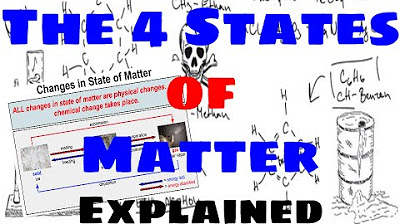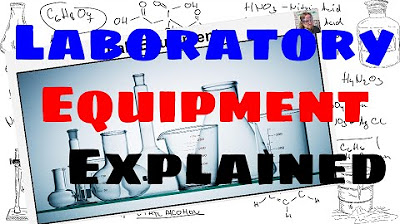Demographic & Epidemiological Transition Model [AP Human Geography Unit 2 Topic 5] (2.5)
Summary
TLDRIn this educational video, Mr. Singh explores the Demographic Transition Model, detailing its five stages from low growth in Stage 1 to potential negative growth in Stage 5, reflecting societal and economic evolution. He also discusses the Epidemiological Transition Model, explaining how societies progress from high mortality due to infectious diseases to managing degenerative diseases and potentially facing a resurgence of infectious diseases. The video emphasizes the importance of understanding these models for AP Human Geography.
Takeaways
- 🌍 The Demographic Transition Model outlines five stages of population change based on economic and social development.
- 🏥 Stage one is characterized by high birth and death rates with low growth due to lack of medicine and high mortality from various causes.
- 🏭 Stage two sees a population boom with high birth rates and decreasing death rates due to the Industrial and Medical Revolutions.
- 📈 Stage three indicates moderate growth with a decrease in total fertility rate as women gain more opportunities and urbanization increases.
- 🌆 Stage four represents zero population growth (ZPG) where birth rates equal death rates, and society becomes more developed with a focus on education and career.
- 📉 The fifth stage, not originally part of the model, is characterized by negative growth where birth rates fall below the replacement level.
- 🦠 The Epidemiological Transition Model describes the shift in disease and death patterns影响 through five stages.
- 🦟 Stage one is marked by high mortality from infectious diseases, famine, and poor sanitation.
- 💊 Stage two witnesses a decline in pandemics with improvements in medicine and technology, though infectious diseases can still be prevalent in urban areas.
- 🏥 Stage three focuses on managing degenerative diseases like cancer and heart disease as life expectancy increases.
- 🛡 Stage four aims to delay degenerative diseases with a focus on lifestyle, sanitation, and reducing risk factors like obesity and tobacco use.
- 🌐 Stage five sees a re-emergence of infectious diseases due to factors like antibiotic resistance, increased urbanization, and globalization.
Q & A
What are the two main models discussed in the video?
-The two main models discussed in the video are the Demographic Transition Model and the Epidemiological Transition Model.
What is the first stage of the Demographic Transition Model characterized by?
-The first stage of the Demographic Transition Model is characterized by low growth, with high birth rates and high death rates that essentially cancel each other out.
Why is the death rate high in the first stage of the Demographic Transition Model?
-In the first stage, the death rate is high due to the lack of medicine, exposure to animal attacks, diseases, and other factors that significantly impact life expectancy.
How does the second stage of the Demographic Transition Model differ from the first?
-In the second stage, the death rate decreases due to advancements in the industrial and medical revolutions, leading to a population boom despite high birth rates.
What is an example of a modern society that is still in the first stage of the Demographic Transition Model?
-The Sentinelese people living on an island off the coast of India are an example of a society still in the first stage, as they have no connection to the outside world.
What is the primary reason for the decrease in death rate in stage two of the Demographic Transition Model?
-The decrease in death rate in stage two is primarily due to food surplus from the industrial revolution and advancements in medicine that increase life expectancy.
What is the third stage of the Demographic Transition Model characterized by?
-The third stage is characterized by moderate growth, where birth rates start to decrease due to increased opportunities for women and urbanization.
What is the difference between stage three and stage four of the Demographic Transition Model?
-In stage four, birth rates and death rates are essentially the same, leading to zero population growth (ZPG), whereas in stage three, there is still a positive natural increase rate.
What is the focus in the fourth stage of the Epidemiological Transition Model?
-The focus in the fourth stage of the Epidemiological Transition Model is on delaying degenerative diseases through improvements in sanitation, lifestyle changes, and medical advancements.
Why does the fifth stage of the Epidemiological Transition Model see a re-emergence of infectious diseases?
-The fifth stage sees a re-emergence of infectious diseases due to antibiotic resistance, increased urbanization, and globalization, which allows for the rapid spread of diseases.
How does globalization contribute to the spread of infectious diseases as discussed in the video?
-Globalization contributes to the spread of infectious diseases by connecting the world through travel and trade, which can expose people to new diseases and spread them to their communities.
Outlines

Dieser Bereich ist nur für Premium-Benutzer verfügbar. Bitte führen Sie ein Upgrade durch, um auf diesen Abschnitt zuzugreifen.
Upgrade durchführenMindmap

Dieser Bereich ist nur für Premium-Benutzer verfügbar. Bitte führen Sie ein Upgrade durch, um auf diesen Abschnitt zuzugreifen.
Upgrade durchführenKeywords

Dieser Bereich ist nur für Premium-Benutzer verfügbar. Bitte führen Sie ein Upgrade durch, um auf diesen Abschnitt zuzugreifen.
Upgrade durchführenHighlights

Dieser Bereich ist nur für Premium-Benutzer verfügbar. Bitte führen Sie ein Upgrade durch, um auf diesen Abschnitt zuzugreifen.
Upgrade durchführenTranscripts

Dieser Bereich ist nur für Premium-Benutzer verfügbar. Bitte führen Sie ein Upgrade durch, um auf diesen Abschnitt zuzugreifen.
Upgrade durchführenWeitere ähnliche Videos ansehen

The Four States of Matter - Explained

Lab Equipment - Explained

3. Gr 11 Life Sciences - Population Ecology - Theory 3 Mark Recapture Method

4. Gr 11 Life Sciences - Population Ecology - Worksheet 1

PENJASKES KELAS X - SOFTBALL

Introduction to Culture [AP Human Geography Review Unit 3 Topic 1]

Menentukan Mr ( massa molekul relatif )
5.0 / 5 (0 votes)
